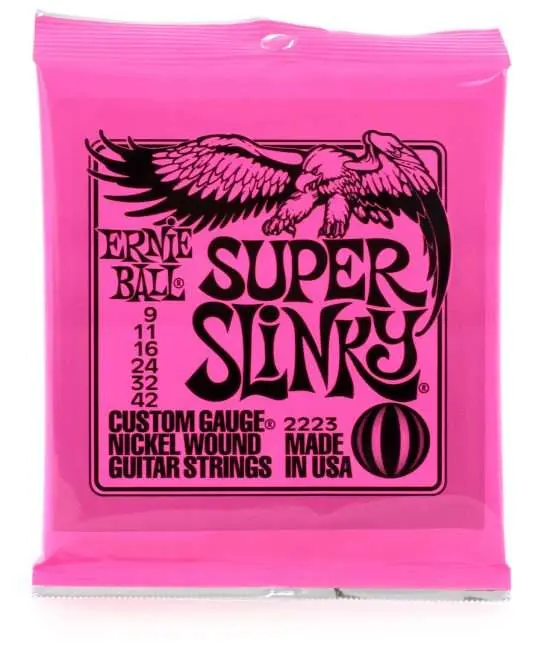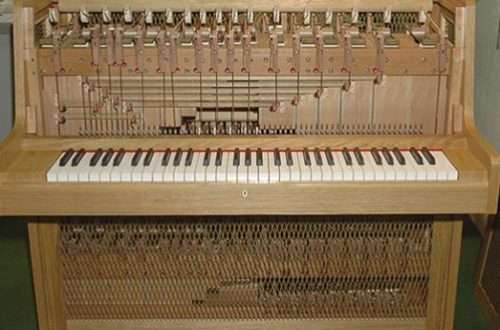
How to choose electric guitar strings?
Important choice
Being the most frequently mentioned parts of a guitar, strings directly influence the sound of the instrument, because they vibrate and the pickups transmit the signal to the amplifier. Their type and size is very important. So what if the guitar is great if the strings don’t sound right. Know what types of strings are and how they affect the sound in order to choose the ones with which the instrument will work best.
Wrap
There are several types of wraps, the three most popular of which are flat wound, half wound (also called semi-flat wound or semi-round wound) and round wound. Round wound strings (pictured right) are the most used strings unprecedentedly. They have a sonorous sound and thanks to that they have great selectivity. Their disadvantages are greater susceptibility to unwanted sounds when using the slide technique and faster wear of the frets and themselves. The strings half wound (in the photo in the center) are a compromise between round wound and flat wound. Their sound is still quite vibrant, but definitely more matte, which makes it less selective. Thanks to their structure, they wear out more slowly, produce less noise when moving your fingers, and wear the frets slower and need to be replaced less often. Flat wound strings (in the photo on the left) have a matte and not very selective sound. They consume frets and themselves very slowly, and produce very little unwanted noise on slides. When it comes to electric guitars, despite their disadvantages, round wound strings are the most common solution due to their sound in all genres except jazz. Jazz musicians prefer to use flat wound strings. Of course, this is not a hard rule. There are rock guitarists with flat wound strings and jazz guitarists with round wound strings.
stuff
There are three most commonly used materials. The most popular of them is nickel-plated steel, which is sound-centered, although a slight advantage of bright sound can be noticed. Very often considered the best choice because of their sustainability. The next one is pure nickel – these strings have a deeper sound recommended to fans of the music of the 50’s and 60’s, then this material reigned in the market for electric guitar strings. The third material is stainless steel, its sound is very clear, it is used quite often in all musical genres. There are also strings made of other materials, such as cobalt. The ones I have described are traditionally used in industry.
A special protective wrapper
It is worth noting that there are also strings with an additional protective wrap. It does not significantly change the sound, but extends the life of the strings. Their sound deteriorates at a slower pace and they are also more durable. As a result, these strings are sometimes even several times more expensive than those without a protective layer. The reason for strings without a special wrapper is the fact that, thanks to their low price, they can be changed more often. You should not enter the recording studio with the monthly strings with a protection layer, because fresh strings without protection will sound better than them. I will also mention that another way to maintain good sound for longer is to equip the guitar with strings produced at very low temperatures.
String size
At the beginning I must say a few words about the measure. Most often they are 24 25/XNUMX inches (Gibsonian scale) or XNUMX XNUMX/XNUMX inches (Fender scale). Most guitars, not just the Gibson and Fender, use one of these two lengths. Check which one you have, because it greatly affects the selection of strings.
The advantage of thin strings is the ease of pressing against frets and making bends. The subjective issue is their less deep sound. The disadvantages are their short sustain and easy break. The advantages of thicker strings are longer sustain and less susceptibility to breakage. The thing that depends on your taste is their deeper sound. The downside is that it is more difficult to press them against the frets and make bends. Note that guitars with a shorter (Gibsonian) scale feel less string thickness than guitars with a longer (Fender) scale. If you want a sound with less bass, it’s best to use 8-38 or 9-42 for shorter scale guitars, and 9-42 or 10-46 for longer scale guitars. The 10-46 strings are considered the most regular set for guitars with a longer scale and often shorter scale. Standard strings have a balance between the plus and minus of heavy and thin strings. On a guitar with a shorter scale, and sometimes even a longer scale, it is worth wearing a 10-52 set for the standard tuning. This is one of the hybrid sizes. I will name 9-46 as the second one. It is worth trying it out when you want to achieve ease of picking up the treble strings, while at the same time wanting to avoid that the bass strings sound too deep. The 10-52 set is also great on both scales for tuning that lowers all strings or drop D by half a tone, although it can be easily used with the standard tuning on both scales.
The “11” strings, especially those with a thick bass, are great if you want a more powerful overall sound for all strings, including the treble strings. They are also great for lowering the pitch within a semitone or tone, up to a tone and a half. The strings “11” without a thickened bottom can be felt on the shorter scale only slightly stronger than the 10-46 on the longer scale and therefore sometimes they are treated as standard for guitars with a shorter scale. The “12” can now be lowered by 1,5 to 2 tones, and the “13” by 2 to 2,5 tones. It is not recommended to wear “12” and “13” in a standard outfit. The exception is jazz. There, the deeper sound is so important that jazzmen give up bends to put on thicker strings.
Summation
It’s best to test a few different string sets and decide for yourself which is the best. It is worth doing, because the final effect depends to a large extent on the strings.
Comments
I have been using the D′Addario eight round wound for years. Sustain sufficient, bright metallic tone and very high wear and tear resistance. Let′s ROCK 🙂
Rockman





